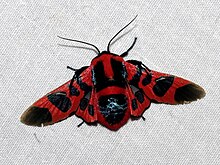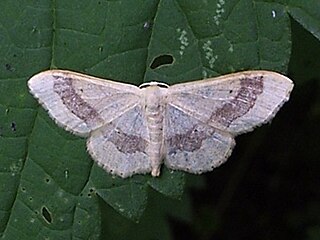| Thyrididae | |
|---|---|
 | |
| Arniocera auriguttata | |
 | |
| Glanycus coendersi , one of the aposematically coloured day-flying species of Thyrididae | |
| Scientific classification | |
| Domain: | Eukaryota |
| Kingdom: | Animalia |
| Phylum: | Arthropoda |
| Class: | Insecta |
| Order: | Lepidoptera |
| Clade: | Eulepidoptera |
| Clade: | Ditrysia |
| Clade: | Apoditrysia |
| Clade: | Obtectomera |
| Superfamily: | Thyridoidea Herrich-Schäffer, 1846 |
| Family: | Thyrididae Herrich-Schäffer, 1846 |
| Subfamilies | |
| Diversity | |
| Over 1,000 species | |
The Thyrididae comprise the family of picture-winged leaf moths. They are the only family in the superfamily Thyridoidea, which sometimes has been included in the Pyraloidea, but this is not supported by cladistic analysis.[ citation needed ]
Contents
Most species live in the tropics and subtropics. They are colourful and often day-flying moths. [1] There are four subfamilies.[ citation needed ] Their biology is little known.[ citation needed ] Thyridid specimens are rare in museum collections.[ citation needed ]

